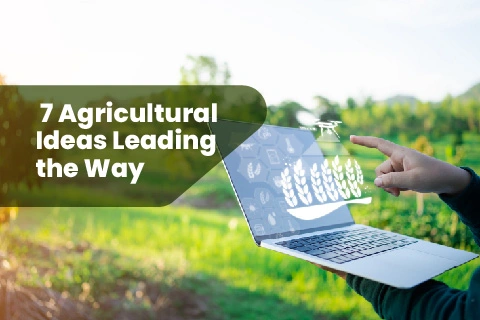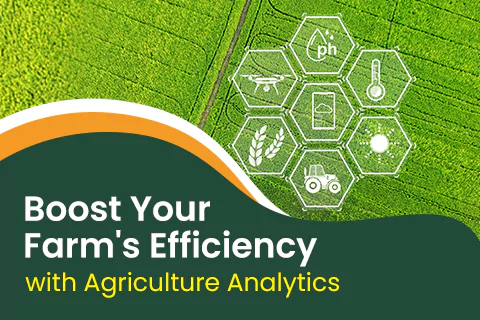Let’s accept the fact: by 2050, the demand for food supply will rise by 80% with flying population growth. And do you know that approximately 10% of the world’s population still goes hungry? So, just picture what feeding almost 10 million mouths feels like. This is an indication of the need to advance innovation in agriculture technology. Thankfully, it’s the only hope to increase productivity, sustainability, and efficiency in food production. In fact, there are different types of tools and technology introduced by analytical companies in India, including drone sensors & GIS and modern greenhouse practices that enable farmers to produce more food by saving money, resources, and time.
If you’re still wondering how it works, let’s understand the seven agricultural ideas and innovative farming techniques that play a major role in agricultural development.
Farm Automation: Automation is gaining ground in farming. Drones monitor crops, while advanced sensors track water and pesticide needs. These devices also assess soil quality. This automation frees farmers to focus on other business areas.
Geographic Information Systems (GIS) in Agriculture
GIS is one of the other important innovation in agriculture sector to understand crop types, their position, soil status, fertilisation level, and other field-related information. GIS mainly relies on drones and satellites, which allows farmers to determine the best location for crop planting in the field, and make the right decision to improve soil nutrition. In fact, in Livestock rearing, GIS is used to monitor the movement of animals. As a result, farmers can track animals’ health, nutrition, and fertility.
Drones for Aerial Monitoring
Drones, also called Aerial Vehicles, are increasingly popular technology for livestock and crop management. For example, sensors on drones check plant growth, monitor disease stress, spray pesticides at specific locations, measure field temperature, and perform many other tasks.
Precision Innovation in Agriculture
As mentioned above, the rapid population growth has led to increased food production and supply per capita. This also has affected the water crisis. In India, mainly in Uttar Pradesh, Bihar, and Maharashtra, there is a drought-like situation every year. And there is hardly any way to get water for the irrigation process. So, to combat this issue, farmers need to turn to precision agriculture and save time, money, and resources. Precision farming includes AI, GIS, and IoT to gather and analyse data about crops, soil, and animals. In addition, it also contributes towards more targeted use of pesticides, seeds, fertiliser, and water.
Big Data & Analytics
The agriculture sector is another data factory, with thousands of data collected every day related to soil quality, crop yields, and fertilisation. This is where big data & analytics can be a great partner that helps farmers decide when to plant, harvest, give water, and how much seed should be used. In fact, farming operations are much affected by weather and environmental changes, which makes it difficult to access resources. Using data analytics in agriculture helps to predict water cycle patterns easily.
Connectivity Technologies
Today’s world demands a deep understanding and data-driven approach to agricultural production. Farmers must communicate to produce food efficiently. Connectivity technologies such as satellites, internet-based platforms, and mobile devices can achieve this. Farmers can share information to make informed decisions about their crop’s growth and raise livestock.
Genetic Engineering
Genetic engineers have transformed crop breeding by enhancing traits such as resistance to diseases, environmental stress, and pests. Genetically modified (GM) crops can improve crop quality. They also help reduce pesticide use and This supports sustainable and ethical agricultural practices.
Indeed, modern innovation in agricultural technologies have become necessary to keep the existence of our species alive. In the coming years, farmers, governments, and analytics companies in India will be more focused on creating approaches that improve crop productivity, support farmers, and reduce environmental impact.


